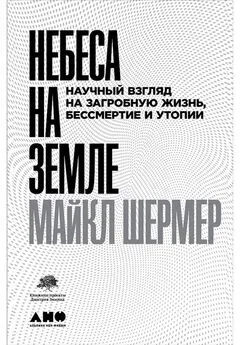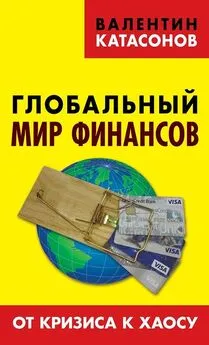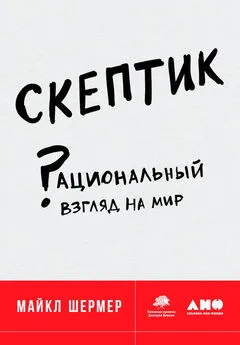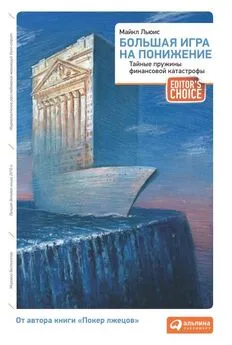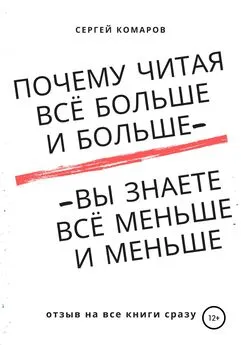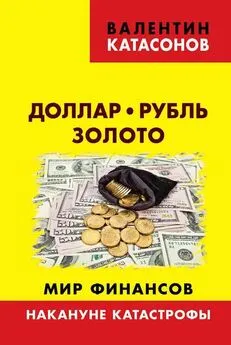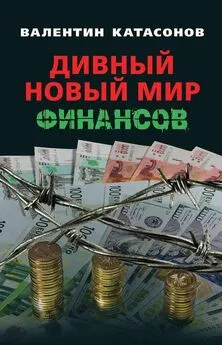Майкл Мобуссин - Больше, чем вы знаете. Необычный взгляд на мир финансов
- Название:Больше, чем вы знаете. Необычный взгляд на мир финансов
- Автор:
- Жанр:
- Издательство:Array Литагент «Альпина»
- Год:2014
- Город:Москва
- ISBN:978-5-9614-3247-3
- Рейтинг:
- Избранное:Добавить в избранное
-
Отзывы:
-
Ваша оценка:
Майкл Мобуссин - Больше, чем вы знаете. Необычный взгляд на мир финансов краткое содержание
Больше, чем вы знаете. Необычный взгляд на мир финансов - читать онлайн бесплатно ознакомительный отрывок
Интервал:
Закладка:
12. См. главу 3.
13. Russo and Schoemaker, Winning Decisions , 123–24.
14. Из напутственной речи Р. Рубина в Университете Пенсильвании, 1999.
Глава 2. Инвестирование – профессия или бизнес?
1. Burton G. Malkiel, “The Efficient Market Hypothesis and Its Critics”, Journal of Economics Perspectives 17 , no. 1 (Winter 2003): 78. Это не новое открытие. См. также следующие статьи: Burton G. Malkiel, “Returns from Investing in Equity Mutual Funds, 1971–1991”, Journal of Finance 50 , no. 2 (June 1995): 549–72; Michael C. Jensen, “The Performance of Mutual Funds in the Period 1945–1964”, Journal of Finance 23 (1968): 389–416.
2. Особая благодарность Гарри Мишурису, который составил первоначальный список и предложил это направление исследования.
3. Джек Богл, используя терминологию Джона Кейнса, противопоставляет спекуляцию («прогнозирование психологии рынка») и предпринимательство («прогнозирование потенциальной доходности актива»). Богл утверждает, что, судя по показателям оборачиваемости портфелей, большая часть инвесторов является спекулянтами. См. статью Джона Богла «Индустрия взаимных фондов в 2003 г.: Назад в будущее» от 14 января 2003 г., http://www.vanguard.com/bogle_site/sp20030114.html.
4. Замечательное рассуждение на эту тему см. в статье Чарльза Эллиса «Может ли деловой успех испортить профессию инвестиционного менеджмента?» в The Journal of Portfolio Management (весна 2001 г.): 11–15.
5. Bogle, “Mutual Fund Industry in 2003”. Также см. “Other People’s Money: A Survey of Asset Management”, The Economist , July 5, 2003; John C. Bogle, “The Emperor’s New Mutual Funds”, The Wall Street Journal , July 8, 2003; и John C. Bogle, “The Mutual Fund Industry Sixty Years Later: For Better or Worse?”, Financial Analysts Journal 61, no. 1 (January-February 2005): 15–24.
6. Ellis, “Will Business Success Spoil the Investment Management Profession?” 14.
Глава 3. Эффект Бэйба Рута
1. Я не приравниванию инвестирование к азартным играм. На самом деле долгосрочное инвестирование противоположно азартной игре. В азартных играх чем дольше вы играете, тем больше у вас шансов проиграть. В инвестировании чем дольше вы инвестируете, тем больше шансов получить положительную доходность.
2. Daniel Kahneman and Amos Tversky, “Prospect Theory: An Analysis of Discussion Under Risk”, Econometrica 47 (1979): 263–91.
3. Nasim Nicholas Taleb, Fooled By Randomness: The Hidden Role of Chance in Markets and in Life (New York: Texere, 2001), 87–88.
4. Талеб замечает, что известный инвестор Джим Роджерс избегал опционов, потому что, по его словам, «90 % опционов приносят убыток». Роджерс путает частоту со средним уровнем доходности по опционам.
5. Brent Schlender, “The Bill and Warren Show”, Fortune , July 20, 1998.
6. Charlie Munger, “A Lesson on Elementary, Worldly Wisdom As It Relates to Investment Management and Business”, Outstanding Investor Digest , May 5, 1995, 50.
7. Речь Уоррена Баффетта на ежегодном собрании в Berkshire Hathaway, 1989.
8. Alfred Rappaport and Michael J. Mauboussin, Expectations Investing (Boston, Mass.: Harvard Business School Press, 2001), 105–8.
9. Steven Crist, “Crist on Value”, in Andrew Beyer et al., Bet with the Best: All New Strategies From America’s Leading Handicappers (New York: Daily Racing Form Press, 2001), 63–64.
10. Edward O. Thorp, Beat the Dealer (New York: Vintage Books, 1966), 56–57.
Глава 4. Разумная теория качественных признаков устарела
1. См.: Mitchel Resnick, Turtles, Termites, and Traffic Jams (Cambridge, Mass.: MIT Press, 1994). См. также: Steven Johnson, Emergence: The Connected Lives of Ants, Brains, Cities, and Software (New York: Scribner, 2001) 12–13.
2. Профессор Бертон Малкил: «Это все равно что перестать верить в Санта-Клауса. Хотя вы знаете, что Санта-Клауса не существует, но в глубине души продолжаете верить в него. Я не говорю, что это мошенничество. Обычно они искренне верят в то, что смогут это сделать. Реальность свидетельствует, что нет» (20/20, ABC News, November 27, 1992). См.: http://www.ifa.tv/Library/Support/
3. Articles/Popular/NewsShowTranscript.htm.
4. Clayton M. Christensen, Paul Carlile and David Sundahl, “The Process of Theory-Building”, Working Paper , 02–016, 4. Новую редакцию этой статьи см. на сайте: http://www.innosight.com/documents/TheoryBuilding.pdf.
5. Phil Rozenzweig, The Halo Effect… and Eight Other Business Delusions That Deceive Managers (New York: Free Press, 2006) [9].
6. Peter L. Bernstein, Capital Ideas: The Improbable Origins of Modern Wall Street (New York: The Free Press, 1992), 129–30.
7. Richard Roll, “A Critique of the Asset Pricing Theory’s Tests: Part 1: On Past and Potential Testability of the Theory”, Journal of Financial Economics 4 (1977): 129–76.
8. Clayton M. Christensen, “The Past and Future of Competitive Advantage”, MIT Sloan Management Review (Winter 2001): 105–9.
9. Kenneth L. Fisher and Meir Statman, “Cognitive Biases in Market Forecasts”, Journal of Portfolio Management 27 , no. 1 (Fall 2000): 72–81.
10. Mercer Bullard, “Despite SEC Efforts, Accuracy in Fund Names Still Elusive”, The Street.com, January 30, 2001. См.: http://www.thestreet.com/funds/mercerbullard/1282823.html.
Глава 5. Рискованный бизнес
1. Gerd Gigerenzer, Calculated Risks (New York: Simon & Schuster, 2002), 28–29.
2. John Rennie, “Editor’s Commentary: The Cold Odds Against Columbia”, Scientific American , February 7, 2003.
3. Gerd Gigerenzer, Calculated Risks , 26–28.
4. Jeremy J. Siegel, Stocks for the Long Run , 3rd ed. (New York: McGraw Hill, 2002), 13 [10].
5. Michael J. Maboussin and Kristen Bartholdson, “Long Strange Trip: Thoughts on Stock Market Returns”, Credit Suisse First Boston Equity Research , January 9, 2003.
6. См. главу 3.
Глава 6. Вы эксперт?
1. J. Scott Armstrong, “The Seer-Sucker Theory: The Value of Experts in Forecasting”, Technology Review 83 (June-July 1980):16–24.
2. Arul Gawande, Complications: A Surgeon’s Notes on an Imperfect Science (New York: Picador, 2002), 35–37.
3. Paul J. Feltovich, Rand J. Spiro, and Richard L. Coulsen, “Issues of Expert Flexibility in Contexts Characterized by Complexity and Change”, in Expertise in Context: Human and Machine , ed. Paul J. Feltovich, Kenneth M. Ford, and Robert R. Hoffman (Menlo Park, Cal.: AAAI Press and Cambridge, Mass.: MIT Press, 1997), 125–46.
4. R. J. Spiro, W. Vispoel, J. Schmitz, A. Samarapungavan, and A. Boeger, “Knowledge Acquisition for Application: Cognitive Flexibility and Transfer in Complex Content Domains”, in Executive Control Processes , ed. B. C. Britton (Hillsdale, N. J.: Lawrence Erlbaum Associates, 1987), 177–99.
5. Robyn M. Dawes, David Faust, and Paul E. Meehl, “Clinical Versus Actuarial Judgment”, in Heuristics and Biases: The Psychology of Intuitive Judgment , ed. Thomas Gilovich, Dale Griffin, and Daniel Kahneman (Cambridge: Cambridge University Press, 2002), 716–29.
6. Gawande, Complications , 44.
7. Katie Haffner, “In an Ancient Game, Computing’s Future”, The New York Times , August 1, 2002.
8. James Surowiecki, The Wisdom of Crowds: Why the Many Are Smarter Than the Few and How Collective Wisdom Shapes Business, Economies, Societies and Nations (New York: Doubleday, 2004) [11].
9. Joe Nocera, “On Oil Supply, Opinions Aren’t Scarce”, The New York Times , September 10, 2005.
10. Philip E. Tetlock, Expert Political Judgment: How Good Is It? How Can We Know? (Princeton, N. J.: Princeton University Press, 2005), 68.
11. Там же, 73–75.
Глава 7. «Горячая рука» в инвестировании
1. Thomas Gilovich, Robert Valone, and Amos Tversky, “The Hot Hand in Basketball: On the Misperception of Random Sequences”, Cognitive Psychology 17 (1985): 295–314.
2. Amos Tversky and Daniel Kahneman, “Belief in the Law of Small Numbers”, Psychological Bulletin 76 (1971): 105–10. Иллюстрацию этой мысли см. в статье Криса Ветцеля на сайте http://www.rhodes.edu/psych/faculty/
3. wetzel/courses/wetzelsyllabus223.htm.
4. Пример взят из рецензии на книгу Стивена Гулда «Полоса удач» (Stephen Jay Gould, “The Streaks of Streaks”, New York Review of Books , August 18, 1988). См. также на сайте http://www.nybooks.com/articles/4337 (доступно на 25 мая 2005 г.).
5. Stephen Gould, Triumph and Tragedy in Mudville (New York: W. W. Norton & Company, 2003), 151–72. См.: http://mlb.mlb.com/mlb/history/
6. rare_feats/index.jsp?feature=hitting_streaks.
7. Gould, “The Streak of Streaks”.
8. Вот математические выкладки: ДиМаджио 7671 раз вставал на пластину за 1736 игр в своей спортивной карьере (4,42 раза за игру). На его счету 2214 хитов со средним показателем хит/появление на пластине 0,289. При таком показателе ДиМаджио мог рассчитывать на хит в 0,778 % своих игр. Таким образом, вероятность хита в 56 играх подряд составляет 0,77856, или 1 на 1,279 млн. См.: Rob Neyer, ESPN Baseball Archives, January 2002, http://espn.go.com/mlb/s/2002/0107/1307254.html. Статистику по ДиМаджио см. в архиве «Статистика по ведущим игрокам Главной лиги бейсбола» на сайте http://mlb.mlb.com/NASApp/mlb/stats/historical/
Читать дальшеИнтервал:
Закладка:


